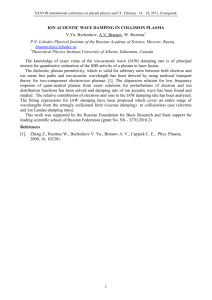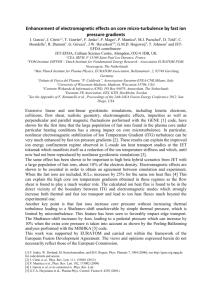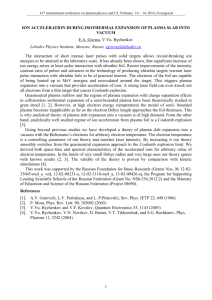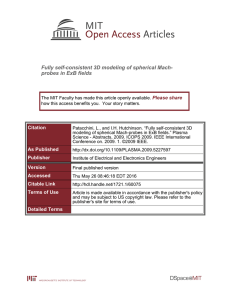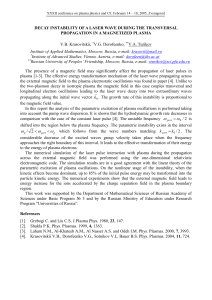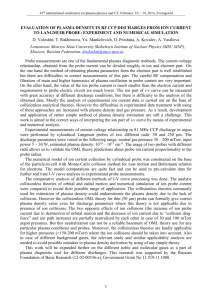ion spectra and wave structure in expanding hot plasma sheet
advertisement
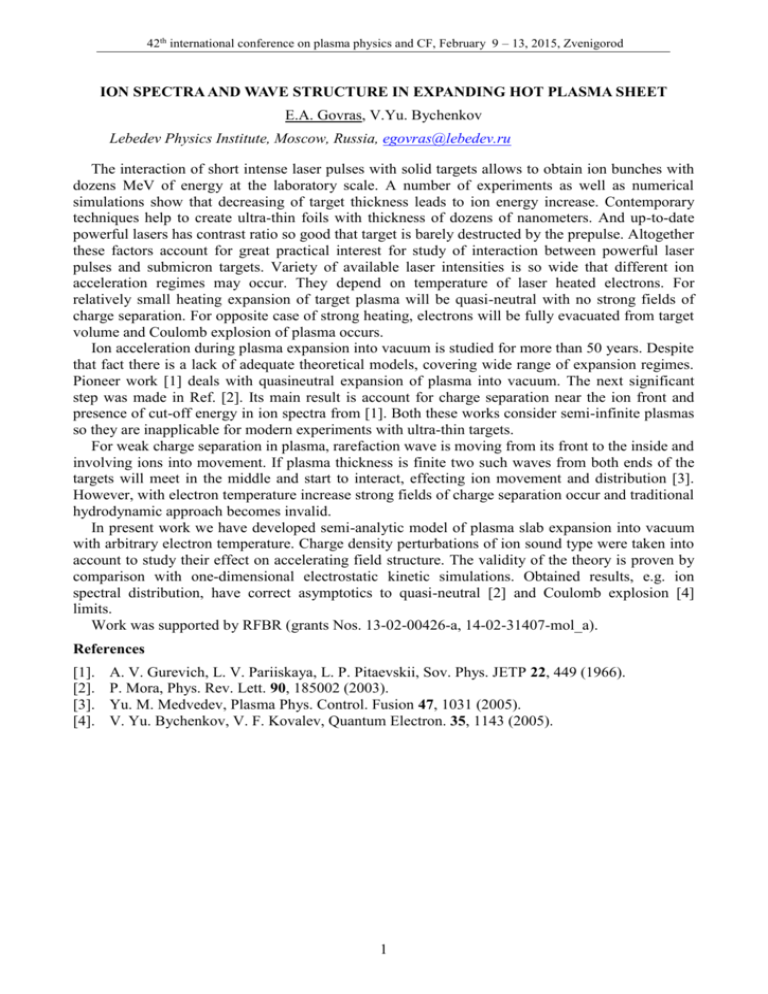
42th international conference on plasma physics and CF, February 9 – 13, 2015, Zvenigorod ION SPECTRA AND WAVE STRUCTURE IN EXPANDING HOT PLASMA SHEET E.A. Govras, V.Yu. Bychenkov Lebedev Physics Institute, Moscow, Russia, egovras@lebedev.ru The interaction of short intense laser pulses with solid targets allows to obtain ion bunches with dozens MeV of energy at the laboratory scale. A number of experiments as well as numerical simulations show that decreasing of target thickness leads to ion energy increase. Contemporary techniques help to create ultra-thin foils with thickness of dozens of nanometers. And up-to-date powerful lasers has contrast ratio so good that target is barely destructed by the prepulse. Altogether these factors account for great practical interest for study of interaction between powerful laser pulses and submicron targets. Variety of available laser intensities is so wide that different ion acceleration regimes may occur. They depend on temperature of laser heated electrons. For relatively small heating expansion of target plasma will be quasi-neutral with no strong fields of charge separation. For opposite case of strong heating, electrons will be fully evacuated from target volume and Coulomb explosion of plasma occurs. Ion acceleration during plasma expansion into vacuum is studied for more than 50 years. Despite that fact there is a lack of adequate theoretical models, covering wide range of expansion regimes. Pioneer work [1] deals with quasineutral expansion of plasma into vacuum. The next significant step was made in Ref. [2]. Its main result is account for charge separation near the ion front and presence of cut-off energy in ion spectra from [1]. Both these works consider semi-infinite plasmas so they are inapplicable for modern experiments with ultra-thin targets. For weak charge separation in plasma, rarefaction wave is moving from its front to the inside and involving ions into movement. If plasma thickness is finite two such waves from both ends of the targets will meet in the middle and start to interact, effecting ion movement and distribution [3]. However, with electron temperature increase strong fields of charge separation occur and traditional hydrodynamic approach becomes invalid. In present work we have developed semi-analytic model of plasma slab expansion into vacuum with arbitrary electron temperature. Charge density perturbations of ion sound type were taken into account to study their effect on accelerating field structure. The validity of the theory is proven by comparison with one-dimensional electrostatic kinetic simulations. Obtained results, e.g. ion spectral distribution, have correct asymptotics to quasi-neutral [2] and Coulomb explosion [4] limits. Work was supported by RFBR (grants Nos. 13-02-00426-a, 14-02-31407-mol_a). References [1]. [2]. [3]. [4]. A. V. Gurevich, L. V. Pariiskaya, L. P. Pitaevskii, Sov. Phys. JETP 22, 449 (1966). P. Mora, Phys. Rev. Lett. 90, 185002 (2003). Yu. M. Medvedev, Plasma Phys. Control. Fusion 47, 1031 (2005). V. Yu. Bychenkov, V. F. Kovalev, Quantum Electron. 35, 1143 (2005). 1


